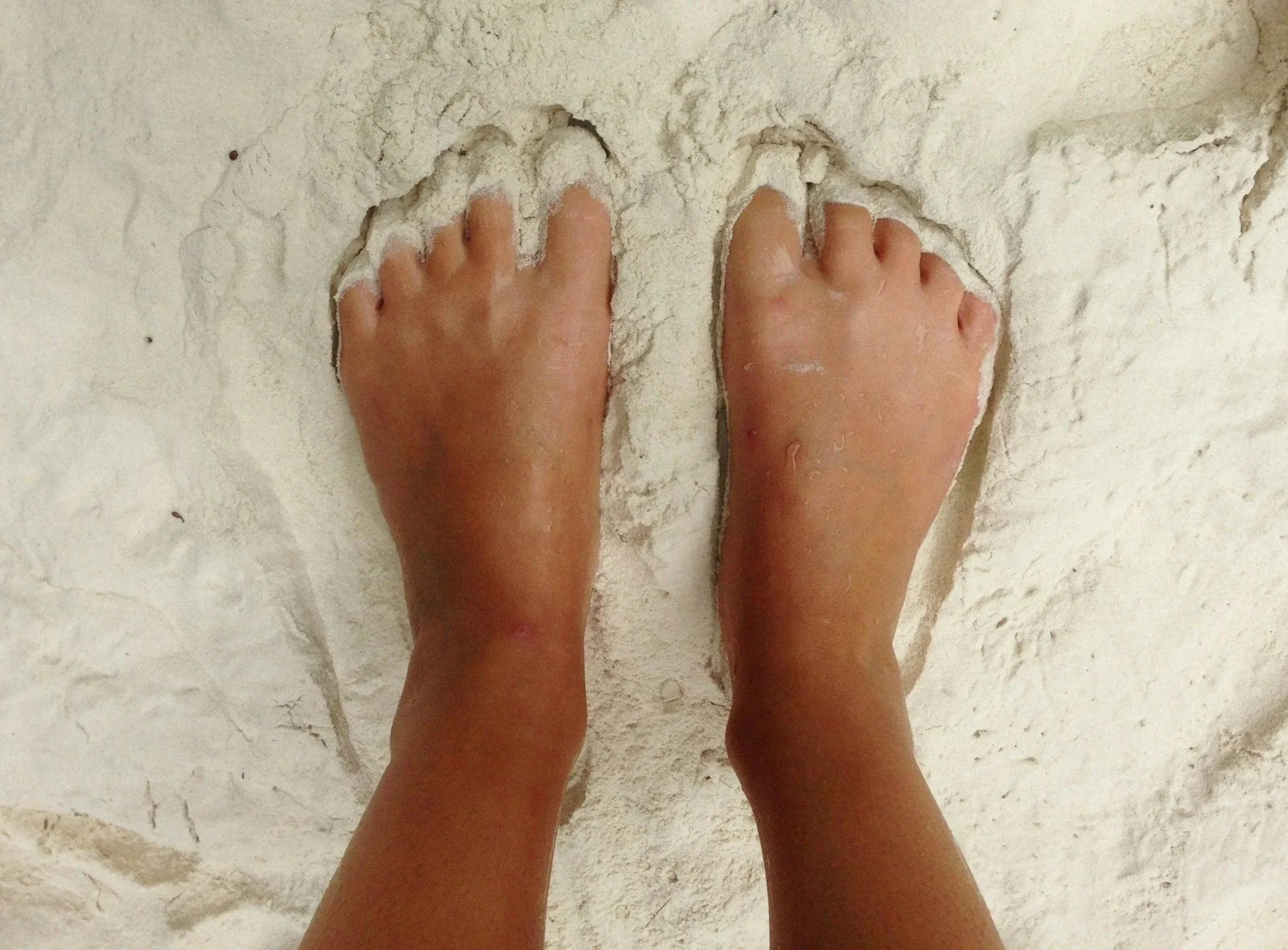Lift Off: Why Your Toenail Is Trying to Leave You
Have you noticed one of your toenails lifting, turning white, or feeling oddly loose lately? You’re not alone — and you might be dealing with a common condition called onycholysis.
We’ve been seeing it more often lately, especially as summer winds down. Whether it’s from sandal season, nail salon visits, or long walks in tight shoes, this issue can sneak up — and often gets overlooked until it becomes painful or infected.
Let’s break down what’s going on — and how to fix it.
What Is Onycholysis?
Onycholysis is the separation of the nail from the nail bed, usually starting at the tip and working its way back. It often appears as a white, yellow, or sometimes even greenish discoloration under the nail.
You may notice:
A gap or lifting at the free edge of the nail
A chalky white or yellow appearance
Mild tenderness or no pain at all — until it worsens
What Causes Onycholysis?
There are several common triggers, and many of them are more frequent during the warmer months:
1. Trauma: Even mild, repetitive trauma — like stubbing your toe or wearing tight shoes on a long walk — can cause the nail to lift. Runners and hikers often deal with this.
2. Fungal Infections: Onycholysis can be one of the first signs of a fungal nail infection. Moist shoes, sweaty feet, and public pools all increase the risk.
3. Nail Polish & Chemicals: Prolonged use of nail polish, acrylics, or gel nails — especially without breaks — can weaken the nail and irritate the nail bed, leading to lifting.
4. Water Exposure: Spending lots of time in the pool or ocean can make nails soft and more vulnerable to trauma or infection.
5. Underlying Health Conditions: Less commonly, onycholysis can be a sign of:
Psoriasis
Thyroid disorders
Medication side effects
Why It Happens More in Summer
Summer is prime time for nail trauma, infections, and overexposure to moisture — which all contribute to onycholysis. Think about it:
Barefoot walks on rough surfaces
Long days in hot, tight shoes
Quick polish changes or rough salon visits
Extra exposure to public showers, pools or hot tubs
All of this adds up to a higher risk of nail separation.
What Not to Do
If you suspect onycholysis, avoid the urge to:
Rip off the lifted portion (this can worsen trauma and cause infection)
Cover it with polish (it can trap moisture and create fungal growth)
Self-treat with random antifungals without knowing the cause
What To Do Instead
Here’s how to help your nail recover:
Keep the nail trimmed, but don’t cut into the lifted area
Keep the nail dry and clean
Avoid tight shoes or trauma to the area
Apply a topical antifungal only if recommended
If the separation worsens, becomes painful, or shows signs of infection (like odor, discharge, or swelling), don’t wait — it’s time to get it checked out.
Treating Onycholysis at Our Practice
At The Foot Doctor, we assess nail issues carefully — because the cause isn’t always obvious. We’ll determine whether it’s:
Traumatic (and will grow out)
Fungal (needs treatment)
Related to a systemic issue (requires labs or referral)
We offer in-office nail debridement, fungal testing, and custom care plans to get your nail back to normal — and prevent future damage. Contact us or book an appointment for more information!


